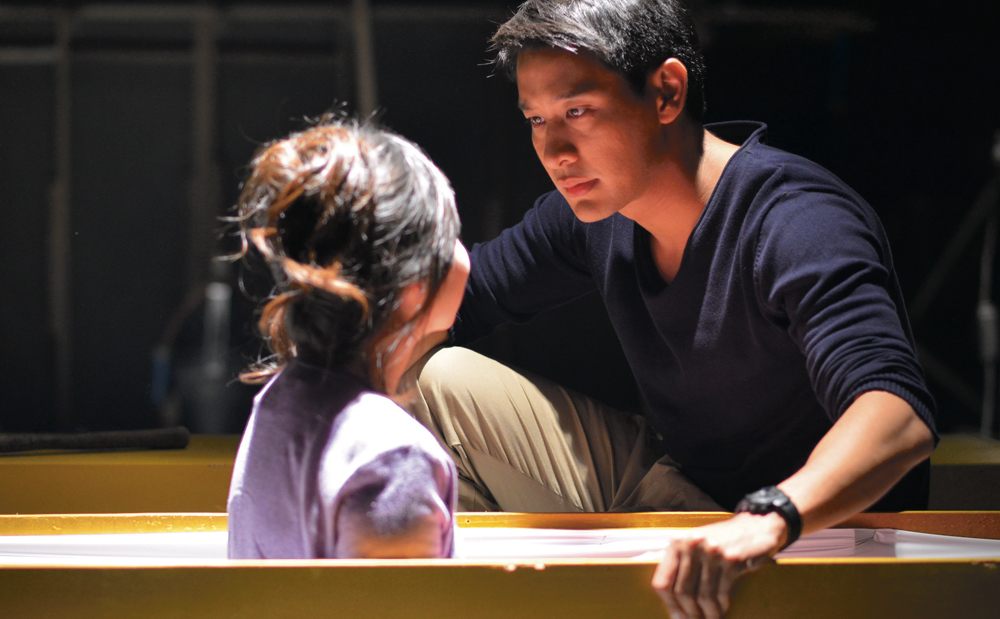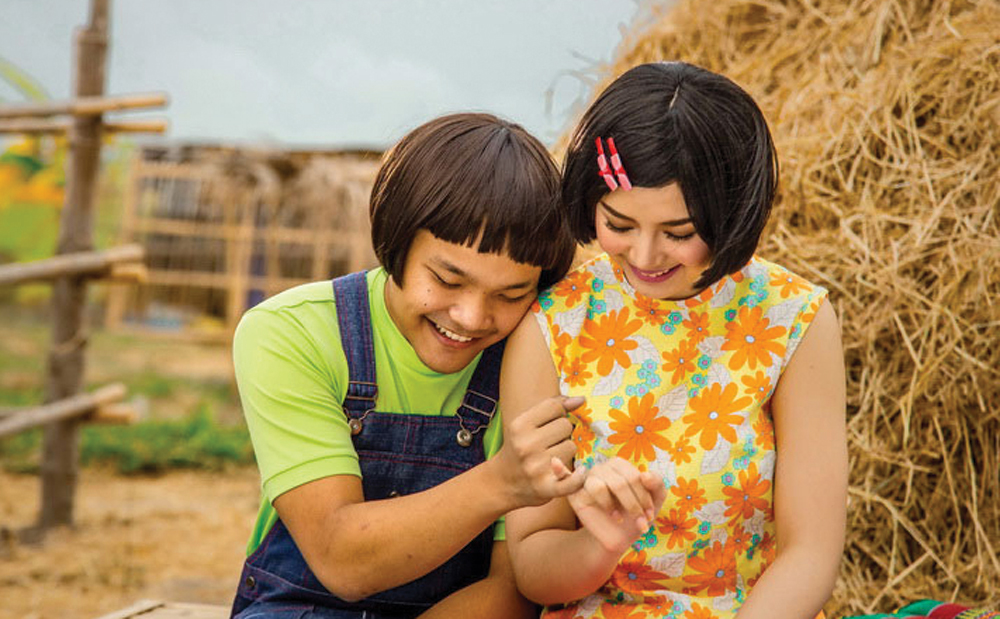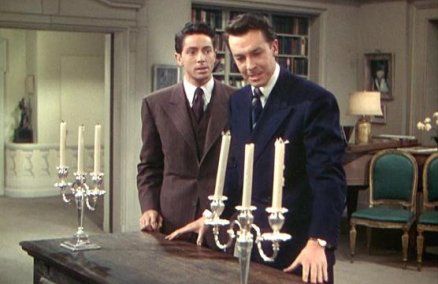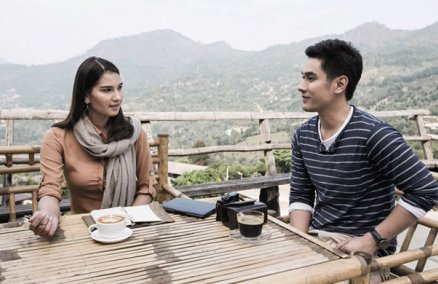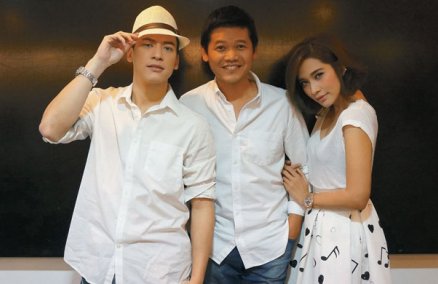It’s been a while since your last visit to Bangkok–what are your memories of it?
We have an office in Bangkok so the city has become a second home in Asia over the years and an excellent springboard from which to explore the mainland and the islands. In my time, I’ve DJ’d at the Met bar, eaten and danced the night away at Bed Supperclub, visited the temples, eaten some more at the fish-(super)market, confiscated bootleg Placebo CDs in Patpong, and, at times, explored the city's more salacious underbelly.
Your new album Loud Like Love will be released next month—how is it different from previous albums?
I wanted to call our last album "Speed of Sound" before Coldplay beat us to it with their single. So this time I scoured the internet to check that "Loud Like Love" had not already been used in a musical context which, to the best of my knowledge, it hasn't. I can't remember exactly when and where and why it came to me, but it was sometime during our first phase of writing. It occurred to me that an underlying theme was emerging. We stood at a turning point: were we to follow our instincts and recognize that this theme was a manifestation of our collective sub-conscience and have the courage to explore, in our own singular manner, the subject that remains the most explored in popular song? Or were we to embrace the intellectual and steer the album’s subject matter away from its natural course out of fear of appearing cliched? Thankfully we chose the former and never once questioned that choice. And the results have exceeded our own expectations.
The new album was a long time coming. What took so long?
It is a common misconception that in the time between visits to a particular country your favorite band hasn't been up to much. In our case, we toured Battle For The Sun (2009) for almost two years. I then decided to take a year off to focus on parenting, during which I wrote some of the songs that appear on Loud Like Love. We reconvened in the summer of 2012 ostensibly to record a new single as we had just signed a new record deal. That single morphed into the five-track B3 EP which we released in the autumn to placate the more militant factions of our fanbase. We then realized that we were having such a fantastic time in the studio with our new producer Adam Noble that it felt as if we had already begun the recording of album seven. And that was when we committed ourselves.
What was the recording process like?
Because we practically fell into the recording process accidentally we all had other commitments to fulfill. Adam Noble was about to tour with the Red Hot Chili Peppers to record their live shows and we had booked a tour to promote the B3 EP. We got back together at the beginning of 2013 to finish the new album. This proved challenging as we had already set quite a high benchmark of quality with our 2012 recordings that we felt we had to surpass in some way. A great deal of self-questioning and insecurity followed. It was unpleasant at the time but it forced us out of our comfort zone and to up the ante. The result is an album that feels as if it has a side A and a side B, like an old vinyl album. And like an old vinyl album it is best consumed in one sitting.
What can we expect from your Bangkok show? Plenty of new material?
Unfortunately, due to the fevered proliferation and iniquitousness of smart devices it has become more and more difficult to preview unfinished or unreleased material in a live setting. We do, however, re-work a lot of our old songs to keep them fresh and enjoy presenting them in a new form. Rest assured, our set-list will differ greatly to the one from the last tour.
Your new single “Too Many Friends” seems a bit of a rallying cry against social media…
"Too Many Friends" is most definitely not a rallying cry against social media. It is a small story about social alienation. I do worry, however, that technology is fast replacing religion as the opium of the people. But we cannot blame the technology itself—people are the problem. After all, guns don't kill people, but people do.
You’re coming here to play the Sonic Bang festival, which has a pretty diverse line-up, from Pitbull to the Pet Shop Boys and a number of K-Pop bands. What’s your strangest festival experience?
Being pelted with cooked ham whilst opening for Metallica at an Italian festival ranks in the top three. We have had many strange objects thrown at us during gigs over the years. Coins hurt the most. Bullets were the most disturbing.
You guys have been playing together for so long. Do you still get the same buzz out of touring/playing shows?
If anything, the satisfaction is greater. But it’s a very nerve-wracking thing to do, because as a performer you are placing yourself in a very vulnerable position. When an audience reaches out to the band as much as the band reaches out to them, a state of collective euphoria akin to transcendence is created. Band and audience exist purely in the moment, our every-day perception of time evaporates and true synergy is achieved. This is a rare occurrence but it is what we strive to achieve every time we step out onto the stage.
Placebo has always been pretty overt in challenging of gender stereotypes—do you feel popular perception has changed at all over the span of your career?
I do not, despite the fact that how we presented ourselves in the 90s has been assimilated into the mainstream. This is nothing more than smoke and mirrors. In my opinion, the human race is as prejudiced as it ever was despite the fact that minorities are accepted by the artistic community. This has always been the case. The internet has simply given a louder voice to the forces of tolerance. But it has also provided a platform for the spineless and hateful---and governments still discriminate against what they fear and do not understand.
We’ve heard you’re pretty interested in Asian religions; can you tell us any more about that?
I’m interested in Buddhism because it is a philosophy of life rather than a religion. In Buddhism, there’s no god and that is a big part of the attraction for me. Right thoughts, right action. No god, no attachments—no worries.
Lately in the news, Thai monks have been getting pretty messed up with drugs, sex and scandals. Do you have any words for them?
I don't quote Jesus very often but I think in this case it is appropriate: "let he who is without sin cast the first stone."
















